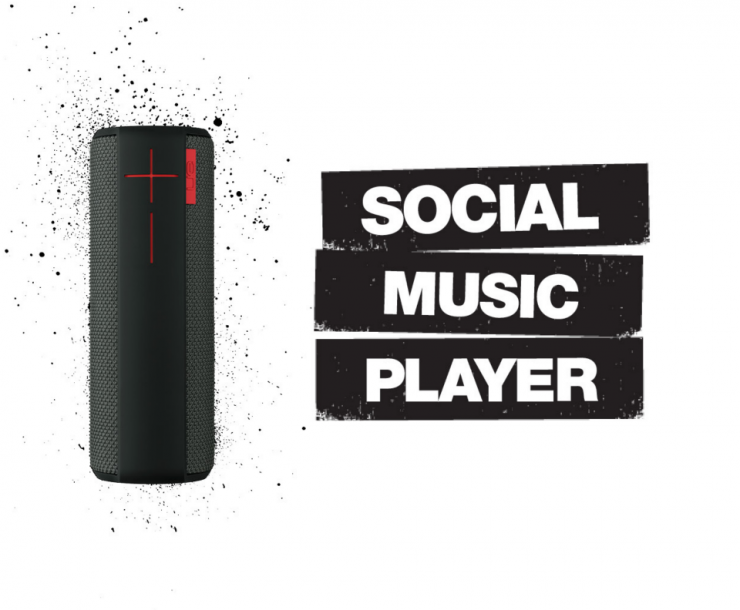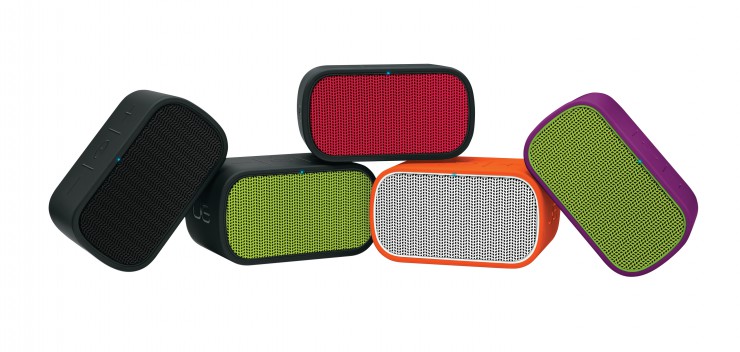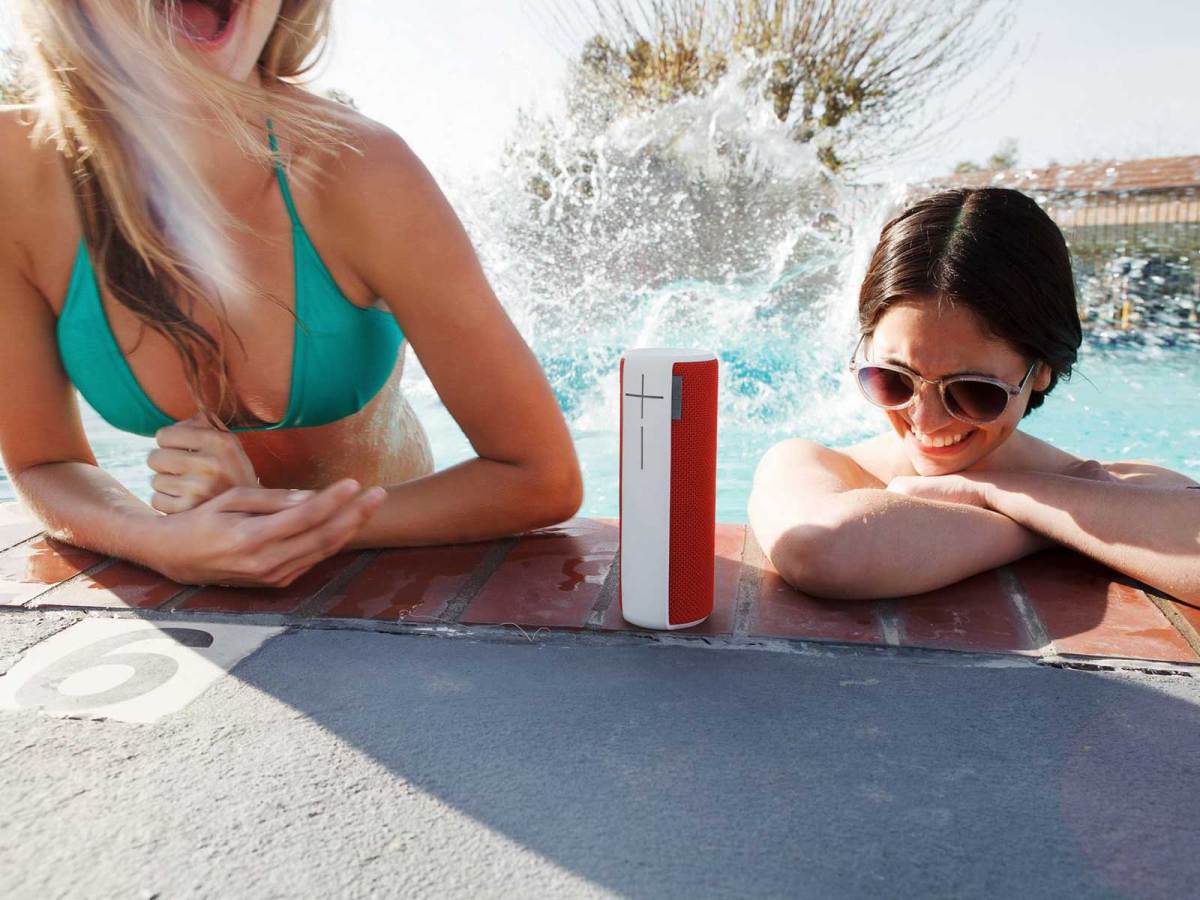Welcome to our ongoing Soundbites series, which takes an in-depth look at the Australian audio market, finding out what the leading brands and suppliers are up to and looking at the best new products available.
(Part I: Yamaha)
(Part II: Parrot)
(Part III: Convoy International)
(Part IV: Sennheiser)
(Part V: Directed)
(Part VI: Apple & Beats special edition)
(Part VII: Amber & Urbanears)

In February 2013, there were 23 SKUs of Bluetooth speaker on the Australian market, Marcus Fry, managing director of Logitech ANZ, tells me. Today, there are 227.
(SKU stands for ‘stock keeping unit’ and refers to each individual type of product on the market. If a model is available in multiple colours, they are normally considered to be separate SKUs.)
It’s a crowded market with so many brands, models and units but it’s a good market to be playing in. Seventy (70) per cent of sales in this category are for speakers $100 and above and the sweet spot is double that figure. It’s an especially good market to be playing in when you’re doing well. Since its launch at a Kings Cross nightclub on 18 July 2013, the UE Boom has dominated the Bluetooth speaker category, with sources saying it’s been the #1 seller more months than not.
One of the most genial managing directors in the Australian technology industry, this is Fry’s second stint at Logitech, having worked for the company in his native England as an account manager from 1996 to 2001. He then spent 12 months with Handspring, a competitor to BlackBerry in the early days of smartphones. Fry wholesaled modular PDAs, with attachments for satellite navigation and cameras, for example, that worked with an iPad-style tablet antecedent. Fry departed before Handspring’s demise to join Navman at the start of the in-car GPS boom. Over the next decade, Fry rode the crest of this popularity explosion, as country manager of Navman’s UK office and then general manager of its Australian office. The in-car personal navigation started unravelling due to price erosion and smartphone competition and, perhaps seeing the writing on the wall, Fry departed in early 2013 to take up the managing director post at Logitech ANZ. Four months later, UE unleashed the Boom onto the market.
Fry says sales have remained so strong since launch that Booms are now being flown into Australia because sea freighting is too slow to meet demand. Global interest has been so feverish that only now, 11 months after launch, is Australia receiving full shipments.
The success of the Boom is a tale that conflates good planning, solid engineering and more than a little crafty marketing.
As the iDevice docking market began to recede, due to the explosion in popularity of Android smartphones and Apple’s retiring of the 30-pin connector, a need arose for a speaker that could conveniently playback music from tablets, smartphones and computers. Although the purists deride Bluetooth’s ability to playback music at audiophile level, improvements in range, reliability and compression mean that it is more than passable for the everyday listener.
Rather than simply release a Bluetooth speaker in the mould of a dock; one that would be static on the bedside table or kitchen bench and used primarily for at-home use, UE integrated several key features that would propel it into the stratosphere.
While not strictly waterproof, the Boom has a “plasma coating” that apparently protects it from honey and coffee and 15 hours of play back on one charge. Armed with these two features, UE set about marketing the speaker not for its audio capabilities but for its mobility. The Boom’s tagline is “social music player”. Lifestyle images were distributed showing the Boom being used at what looks like a binge session at Schoolies; in the background, on top of a car, behind a beautiful young lady in a scene that could be from a Lana Del Rey video; and in the shower of what could only be described as a pre-orgy scenario. In none of these images does it look as though anyone is actually listening to music. The Boom shot straight to #1 on the sales chart.
Thankfully, at least one person has actually listened to the Boom post-purchase (and presumably a lot more besides). Respected rival hack Luke Hopewell wrote in his very positive Gizmodo review that, “I never thought this would be a complaint I’d have about a Bluetooth speaker, but it’s one I have with the UE Boom: it’s almost too loud to be used as an indoor product”.
When I repeat this back-handed criticism to Marcus Fry, his eyes light up and he tells me that, using the UE Boom app, existing and future users can adjust the volume increments, so that the jumps between volume levels volume levels, for example, are not as pronounced. He also says the app has been updated to make pairing multiple Booms simpler and reconnecting more automated. There is also an equaliser function to perfect balance when playing back in stereo and the ability to use the Boom as an alarm. He describes this app has UE’s attempt to futureproof the Boom and compares these updates to the firmware upgrades that are often pushed to Smart TVs and other connected devices.
With rugged mobility and a decent amount of playback time per charge insured, UE were ahead of the market with the Boom’s release. Sources say the #2 selling unit over this time is Bose’s SoundLink Mini, which is RRP $249. The Mini’s form factor doesn’t lend itself to portability and it is noticeably heavier (670 grams vs 538 grams); plus, there are no tough features and playback is only an advertised seven hours. It’s these differences that make all the difference between being a top seller and being the top seller.

UE recently complemented the Boom with a Mini model at RRP $99 and introduced the larger Boombox for RRP $299, though this model is being phased out. It is technically possible to pair different speakers though Fry says this is will be an unideal experience.
Interestingly, considering the strife Logitech endured when it first began selling direct online, the UE range is only available in Australia through authorised dealers. Click the Buy Now link on the UE microsite, and you are invited to visit the websites of Apple, Myer, JB Hi-Fi, Dick Smith, The Good Guys and Harvey Norman.
The headphones market has not been as enjoyable an experience. Ultimate Ears was started in southern California in 1995 as an earphones brand for professional performing artists. UE’s website lists hundreds of recording artists as beneficiaries of its technology, with particularly prominence given to Mumford & Sons, Florence + the Machine and Passion Pit. Logitech acquired it in 2008 with the aim of leveraging this heritage and the people involved to greatly expand its audio range and, while this has worked in Bluetooth speakers, the unforgiving headphone market has seen this range become something of an afterthought. There’s a suggestion that the UE headphone range doesn’t really comprise the right models for the Australian market and Fry said it was hard to compete with the marketing budgets being expended by rivals such as Beats.
Outside of UE altogether, Fry reports that Logitech ANZ is on a good run. The company has refreshed some of its peripherals ranges for the first time in three years and there is growth across these core mice and keyboard categories. Cordless keyboards, Fry says, are growing at 25-to-35 per cent year-on-year in a total market of $33 million, even though “nobody is talking about it”. The trend of connecting a PC or connected device to a TV is surging in Australia, meaning consumers are actively looking for convenient, wireless input devices. He cites Logitech’s K830 wireless keyboard with touchpad, an RRP $129 product, as a particularly good product for this market.
I ask Fry if he is concerned about his retail partners dedicating so much energy, effort and shelf space into private labels, specifically referencing Dick Smith’s ambition to grow its own brands to 15 per cent of sales volume. The usually animated Fry is phlegmatic in his response, saying that retailers need to have “a healthy mix” of products across brands and price points. Consumers want choice, he says, so retailers have to provide this.

